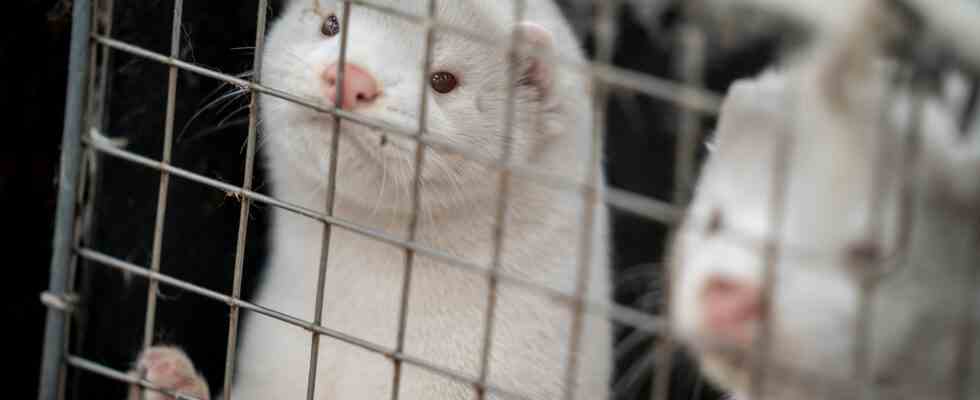Status: 01/29/2023 3:48 p.m
Scores of animals have died on a Spanish mink farm following the outbreak of bird flu. Experts are alarmed: they see signs that the H5N1 virus is adapting to mammals – and is therefore becoming more dangerous for humans.
Experts are concerned about an outbreak of bird flu at a Spanish mink farm. You see signs that the H5N1 virus is adapting to mammals. This could also increase the risk of infection for humans.
The pathogens had previously been found in other mammal species – such as raccoons, foxes, martens or seals – said Thomas Mettenleiter from the Friedrich Loeffler Institute for Animal Health of the dpa news agency. So far, however, there have been individual events in which the virus has passed from a bird to a mammal.
Bird flu is rampant on several continents
With the outbreak in Spain in October 2022, however, it could be that “the pathogen really did spread from mammal to mammal – i.e. from mink to mink”. According to Mettenleiter, the events in Spanish mink breeding could have been an indication of a further adaptation step of the virus. The background to the concern is the currently rampant, largest ever documented wave of bird flu in birds, which extends over several continents.
This gives the pathogen more opportunities to spread to mammals. In addition, the cramped conditions in which the mink were kept were conducive to such a possible spread among these animals, says Mettenleiter. Therefore, the event in Spain was “definitely a warning signal”.
Fear of pandemic caused by mutations
Other researchers were also alarmed. Tom Peacock of Imperial College London told Science magazine: “This is incredibly worrying.” For him, this is “a clear mechanism for how an H5 pandemic could start”.
Animals kept at a farm in the northwestern region of Galicia began dying in October last year, Science reported. At first, veterinarians expected the coronavirus to be the trigger. But tests showed that the H5N1 virus had led to the deaths. As a result, the farm’s more than 50,000 mink were killed and their carcasses destroyed. Farm workers themselves were not infected.
Since the receptors to which the virus docks in the airways of birds are rarer in mammals, they are usually spared from bird flu, according to “Science”. However, animals could contract bird flu, for example, by ingesting wild bird droppings or preying on infected animals.
Virologist at the Harbin Veterinary Research Institute in China, Hualan Chen, told Nature magazine that spread among mammals suggests there is a greater risk to public health. According to the “Science” report, it is not known how easily the virus found in mink can infect humans or spread between them.
Mink farms as a source of infection
However, several mutations were found in virus samples from four animals. One of them contributes to the fact that the H5N1 virus can multiply better in mammalian tissue.
Even the corona virus, which was brought into mink farms by humans, had spread rapidly among the animals. Researchers fear the mink industry could become a constant source of infection and a breeding ground for viral mutations.

